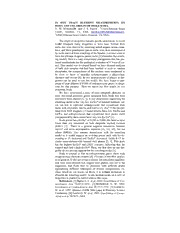
NASA Technical Reports Server (NTRS) 20110012690: In Situ Trace Element Measurements on Roda and the Origin of Diogenites PDF
Preview NASA Technical Reports Server (NTRS) 20110012690: In Situ Trace Element Measurements on Roda and the Origin of Diogenites
IN SITU TRACE ELEMENT MEASUREMENTS ON RODA AND THE ORIGIN OF DIOGENITES. D. W. Mittlefehldt1 and J. S. Herrin2. 1NASA/Johnson Space Center, Houston, TX, USA. [email protected]. 2ESGC/Johnson Space Center, Houston, TX, USA.. The origin of diogenites remains poorly understood. A recent model interprets many diogenites to have been formed from melts that were derived by remelting initial magma ocean cumu- lates, and these penultimate parent melts were then contaminated by melts derived from remelting of the basaltic (eucritic) crust to form the ultimate diogenite parent melts [1] (hereafter the remelt- ing model). This is a very complicated petrogenesis that has pro- found implications for the geological evolution of 4 Vesta if cor- rect. This model was developed based on trace element analyses of bulk rock samples that had been leached in acids to remove phosphates; the compositions of the residues were interpreted to be close to those of cumulus orthopyroxenes ± plagioclase, chromite and olivine [1]. In situ measurements of phases in dio- genites can be used to test this model. We have begun a cam- paign of laser ablation ICP-MS of orthopyroxene grains in dioge- nites for this purpose. Here we report our first results on one diogenite, Roda. We have determined a suite of trace lithophile elements on nine, mm-sized pyroxene grains separated from Roda that have previously been studied [2, 3]. A key observation supporting the remelting model is the very low Eu/Eu* of leached residues; val- ues too low to represent orthopyroxene that crystallized from melts with chondritic Sm/Eu and Gd/Eu [1]. (Eu* = Eu interpo- lated from REE diagrams.) Crustal remelts have low Sm/Eu and Gd/Eu, and orthopyroxenes that crystallized from parent melts contaminated by them would have very low Eu/Eu* [1]. Roda grains have Eu/Eu* of 0.243 to 0.026; the latter a value lower than any measured on bulk diogenite leached residues (0.041) [1]. There is a general negative correlation between Eu/Eu* and some incompatible elements (Zr, Nb, Hf), but not others (LREE). This appears inconsistent with the remelting model as it would suggest an evolving parent melt with La de- creasing as Zr increased and Eu/Eu* decreased. Grain R-15 in- cludes trace-element-rich trapped melt phases [2, 3]. This grain has the highest Eu/Eu* and LREE contents, indicating that the trapped melt had a high Eu/Eu*. Thus, our first data on one dio- genite do not provide support for the remelting model [1]. Roda is unusual in that its orthopyroxene grains show wide ranges in trace element contents [4]. Previous in situ REE analys- es of grain R-15 did not reveal evidence for subsolidus equilibra- tion with trace-element-rich trapped melt phases, and led to the suggestion that Roda may be polymict, with different grains representing different lithologies of diverse compositions [3]. Thus, based on our results on Roda, it is perhaps premature to abandon the remelting model. In situ measurements on a suite of diogenites is planned to further address this issue. References: [1] Barrat J.-A. et al. 2010. Geochimica et Cos- mochimica Acta 74:6218–6231. [2] Mittlefehldt D. W. 1994. Geochimica et Cosmochimica Acta 58:1537-1552. [3] Fowler G. W. et al. 1997. Abstract #1494. 28th Lunar & Planetary Science Conference. [4] Fowler G. W. et al. 1995. Geochimica et Cosmo- chimica Acta 59:3071–3084.
